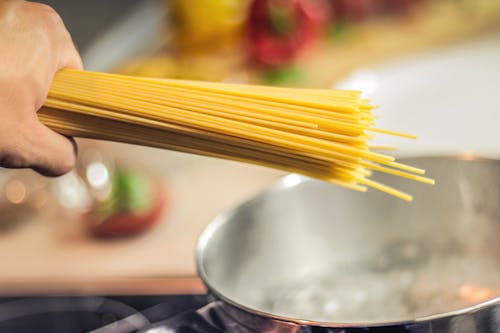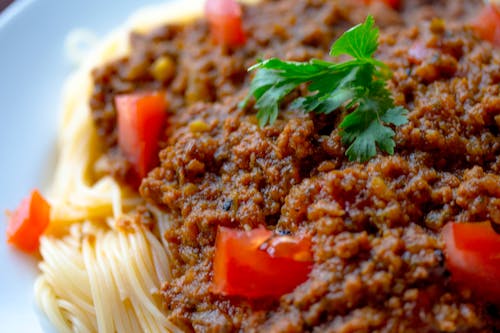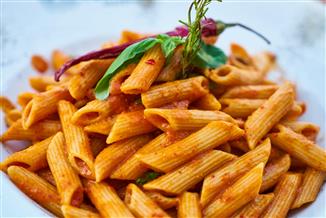
Cooking from scratch is an empowering and rewarding experience that elevates your culinary skills and enhances the flavors of your dishes. Making your own pasta, sauces, and other staples from scratch not only ensures freshness and quality but also allows you to customize ingredients and techniques to suit your preferences. This article will guide you through the process of creating delicious homemade pasta, sauces, and more, offering tips, techniques, and recipes to help you master these essential kitchen skills.
1. Homemade Pasta: Crafting the Perfect Noodles
1.1. The Basics of Pasta Dough
Making pasta from scratch begins with preparing the dough. Traditional pasta dough is simple, requiring only a few basic ingredients: flour, eggs, and salt. The process involves mixing and kneading the dough to achieve the right texture and consistency.
Ingredients:
- 2 cups all-purpose flour (or semolina flour for a coarser texture)
- 3 large eggs
- 1/2 teaspoon salt
- 1 tablespoon olive oil (optional, for added richness)
Instructions:
- Prepare the Dough: On a clean surface, form a mound with the flour and create a well in the center. Crack the eggs into the well and add the salt (and olive oil if using). Using a fork, gently mix the flour and eggs until combined.
- Knead the Dough: Once the dough starts to come together, use your hands to knead it for about 8-10 minutes. The dough should be smooth and elastic. If it’s too sticky, add a little more flour; if too dry, add a few drops of water.
- Rest the Dough: Wrap the dough in plastic wrap and let it rest for at least 30 minutes at room temperature. This allows the gluten to relax, making it easier to roll out.
1.2. Rolling and Cutting Pasta
After resting, roll out the dough into thin sheets. You can use a rolling pin or a pasta machine to achieve the desired thickness. Once rolled, cut the pasta into your preferred shape.
Using a Rolling Pin:
- Flour the Surface: Lightly flour your work surface and rolling pin to prevent sticking.
- Roll Out the Dough: Roll the dough as thin as possible, aiming for about 1/16-inch thickness.
Using a Pasta Machine:
- Set the Thickness: Start with the widest setting and gradually work your way to thinner settings.
- Roll the Dough: Feed the dough through the machine, adjusting the thickness as you go.
Cutting the Pasta:
- Tagliatelle or Fettuccine: Roll the dough into a loose cylinder and cut it into strips using a sharp knife.
- Pappardelle: Cut the rolled dough into wide ribbons.
- Ravioli: Use a pasta cutter or a knife to cut the dough into squares or circles, and fill them with your choice of filling before sealing with a fork.
1.3. Cooking Fresh Pasta
Fresh pasta cooks much faster than dried pasta. To cook it:
- Boil Water: Bring a large pot of salted water to a boil.
- Cook the Pasta: Add the fresh pasta and cook for 2-4 minutes, depending on the thickness. Fresh pasta should be tender but still slightly firm.
- Drain and Serve: Drain the pasta and toss with your favorite sauce or toppings.
2. Homemade Sauces: From Classic Marinara to Creamy Alfredo
2.1. Classic Marinara Sauce
Marinara sauce is a versatile and foundational tomato-based sauce that’s perfect for pasta dishes. Making it from scratch allows you to control the flavor and texture.
Ingredients:
- 2 tablespoons olive oil
- 1 medium onion, finely chopped
- 3 garlic cloves, minced
- 1 can (28 ounces) crushed tomatoes
- 1 tablespoon tomato paste
- 1 teaspoon dried oregano
- 1 teaspoon dried basil
- Salt and pepper to taste
- 1 tablespoon sugar (optional, to balance acidity)
Instructions:
- Sauté the Aromatics: Heat olive oil in a large skillet over medium heat. Add the chopped onion and cook until translucent, about 5 minutes. Add the minced garlic and cook for another minute.
- Add Tomatoes and Seasonings: Stir in the crushed tomatoes, tomato paste, oregano, basil, salt, pepper, and sugar if using. Bring to a simmer.
- Simmer the Sauce: Reduce the heat and let the sauce simmer for 20-30 minutes, stirring occasionally. The sauce should thicken and develop a rich flavor.
- Blend (Optional): For a smoother texture, use an immersion blender to blend the sauce until smooth.
2.2. Creamy Alfredo Sauce
Alfredo sauce is a rich and indulgent cream-based sauce that’s perfect for pasta dishes.
Ingredients:
- 1/2 cup unsalted butter
- 1 cup heavy cream
- 1 cup freshly grated Parmesan cheese
- 2 garlic cloves, minced
- Salt and pepper to taste
- 1/4 teaspoon nutmeg (optional, for added depth of flavor)
Instructions:
- Melt Butter: In a large skillet, melt the butter over medium heat.
- Add Garlic and Cream: Add the minced garlic and cook for 1 minute until fragrant. Stir in the heavy cream and bring to a simmer.
- Add Cheese and Seasonings: Reduce heat and gradually whisk in the Parmesan cheese until melted and smooth. Season with salt, pepper, and nutmeg if using.
- Combine with Pasta: Toss the cooked pasta with the Alfredo sauce, adding a bit of pasta water if needed to reach the desired consistency.
2.3. Pesto Sauce
Pesto sauce is a fresh and flavorful option made with basil, garlic, nuts, and cheese.
Ingredients:
- 2 cups fresh basil leaves
- 1/2 cup pine nuts (or walnuts)
- 1/2 cup grated Parmesan cheese
- 1/2 cup olive oil
- 3 garlic cloves
- Salt and pepper to taste
Instructions:
- Blend Ingredients: In a food processor, combine basil, pine nuts, Parmesan cheese, and garlic. Pulse until finely chopped.
- Add Olive Oil: With the processor running, slowly add the olive oil until the mixture becomes a smooth paste. Season with salt and pepper to taste.
- Store or Serve: Use immediately or store in an airtight container with a thin layer of olive oil on top to prevent browning.
3. Homemade Bread: Crafting Artisan Loaves
3.1. Basic Bread Recipe
Making your own bread can be a fulfilling and cost-effective way to enjoy fresh, high-quality loaves.
Ingredients:
- 3 cups all-purpose flour
- 1 packet (2 1/4 teaspoons) active dry yeast
- 1 cup warm water
- 2 tablespoons sugar
- 1 teaspoon salt
- 2 tablespoons olive oil
Instructions:
- Activate Yeast: In a small bowl, dissolve the sugar in warm water and add the yeast. Let it sit for 5-10 minutes until frothy.
- Mix Ingredients: In a large bowl, combine the flour and salt. Create a well in the center and add the yeast mixture and olive oil. Stir until a dough forms.
- Knead the Dough: Turn the dough out onto a floured surface and knead for 8-10 minutes until smooth and elastic.
- Let Rise: Place the dough in a greased bowl, cover with a damp cloth, and let rise in a warm place for 1-2 hours or until doubled in size.
- Shape and Bake: Punch down the dough and shape it into a loaf. Place it in a greased loaf pan and let rise for another 30 minutes. Bake at 375°F (190°C) for 25-30 minutes, or until the loaf sounds hollow when tapped.
3.2. Sourdough Bread
Sourdough bread offers a tangy flavor and chewy texture, achieved through a natural fermentation process.
Ingredients:
- 1 cup sourdough starter
- 1 1/2 cups warm water
- 4 cups bread flour
- 1 1/2 teaspoons salt
Instructions:
- Mix Ingredients: In a large bowl, combine the sourdough starter with warm water. Gradually add the flour and salt, mixing until a dough forms.
- Knead the Dough: Turn the dough onto a floured surface and knead for 8-10 minutes until smooth and elastic.
- Let Rise: Place the dough in a lightly greased bowl, cover, and let rise for 4-6 hours or until doubled in size.
- Shape and Bake: Shape the dough into a loaf and place it in a proofing basket. Let it rise for 1-2 hours. Bake at 450°F (230°C) for 30-35 minutes, or until golden brown and hollow-sounding.
4. Additional Tips and Tricks
4.1. Flavor Enhancements
To elevate your homemade dishes, consider experimenting with different herbs, spices, and flavorings. Fresh herbs, such as basil, rosemary, and thyme, can add vibrant flavors to sauces and pasta. Adding a splash of wine or a sprinkle of cheese can also enhance the depth of your dishes.
4.2. Storage and Preservation
Store your homemade pasta in an airtight container in the refrigerator for up to 3 days or freeze it for longer storage. Fresh pasta can be frozen in individual portions and cooked from frozen. Homemade sauces can be stored in the refrigerator for up to a week or frozen for up to 3 months. Be sure to label and date your containers for easy identification.
4.3. Experiment with Techniques
Don’t be afraid to experiment with different techniques and ingredients. Try making whole grain pasta or incorporating different flours into your dough. Experiment with flavor variations in your sauces by adding ingredients like sun-dried tomatoes, roasted peppers, or fresh herbs.

Conclusion
Making your own pasta, sauces, and other staples from scratch is a rewarding experience that enhances the quality and flavor of your meals. By mastering the art of homemade pasta, sauces, and bread, you not only improve your culinary skills but also gain a deeper appreciation for the ingredients and techniques that go into creating delicious dishes. Whether you’re preparing a simple weeknight dinner or hosting a special occasion, homemade components add a personal touch and elevate your dining experience. With practice and experimentation, you can create a variety of flavorful and satisfying dishes that reflect your unique taste and creativity.








